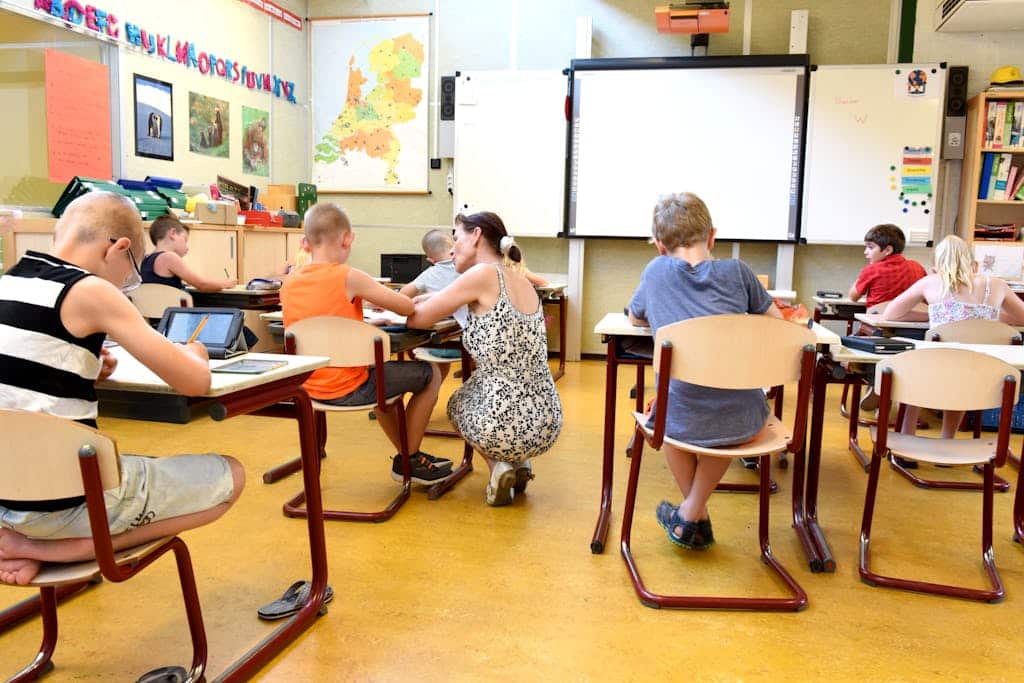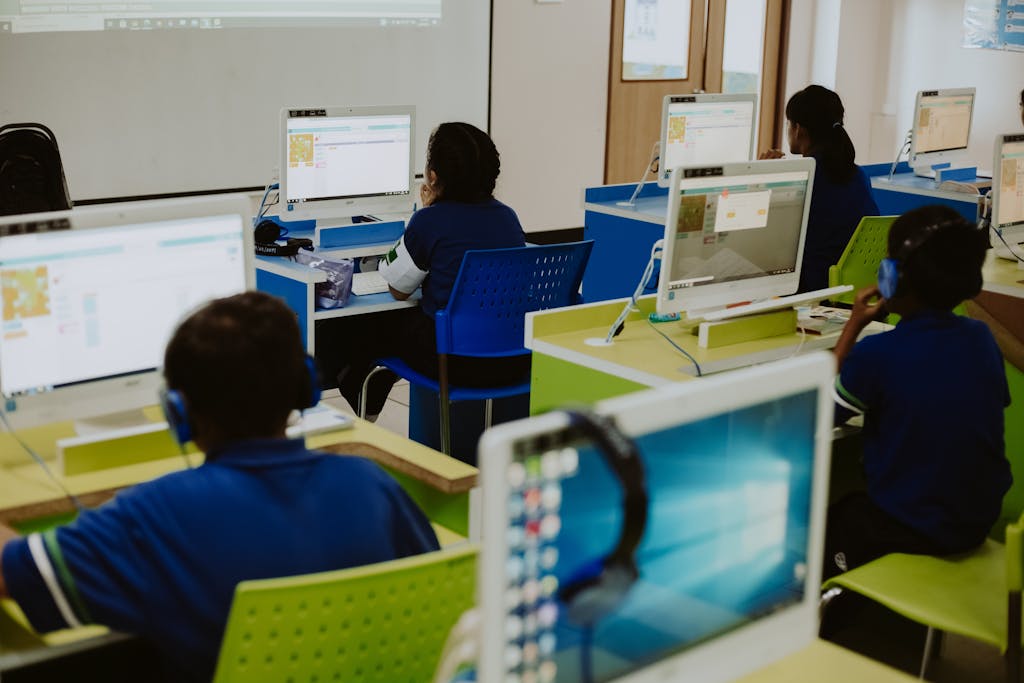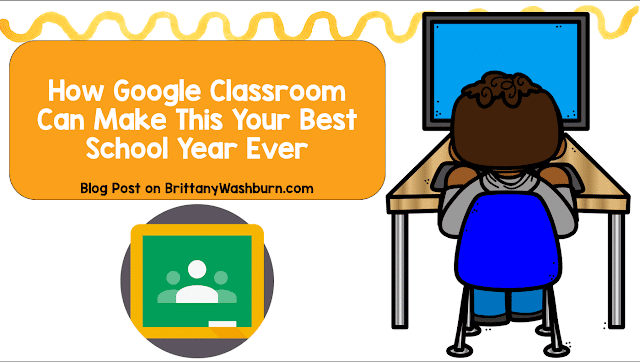Discover amazing new ways to teach with cutting-edge tech tools designed just for you!
Cutting-edge tech tools have revolutionized traditional teaching methods, providing educators with innovative ways to engage students and enhance their learning experiences. From virtual reality simulations that transport learners to distant worlds, to adaptive learning software that personalizes education based on individual needs, these advancements are not just novelties—they are transforming the way knowledge is both imparted and absorbed. We will explore amazing new ways to teach with these technologies, highlighting their benefits, addressing potential challenges, and envisioning the future of education in a tech-driven landscape.
The Evolution of Teaching with Technology
The Importance of Embracing Technology
Embracing technology in education doesn’t just mean replacing old with new; it’s about enhancing how we teach and how students learn. By harnessing the power of cutting-edge tech tools, educators can create dynamic environments that cater to different learning styles, keep students engaged, and prepare them for a future that is undeniably digital.
Defining Cutting-Edge Technology in Education
So, what do we mean by “cutting-edge” tech tools? It’s not just about the latest gadgets that come with a hefty price tag. Cutting-edge technology in education encompasses anything that enhances learning through innovation. Think virtual reality experiences that transport students to ancient Rome, programs that incorporate movement or imagination, and software that uses artificial intelligence to personalize learning paths.
Benefits of Integrating Tech Tools into Curriculum
Integrating tech tools into the curriculum can transform the educational experience. For starters, these tools can lead to increased student engagement by offering interactive lessons are more appealing than an endless stream of lectures and worksheets. Plus, they foster collaboration and communication among students, making group projects less of a nightmare and more of a creative powerhouse. Moreover, with technology, educators can track progress and tailor instruction to meet individual needs.
Types of Cutting Edge Tech Tools
Virtual Reality and Augmented Reality in the Classroom
Imagine letting your students step into a time machine where students can experience history firsthand, or suiting them up to explore the cosmos without leaving their desks! With virtual reality (VR) and augmented reality (AR), this is no longer science fiction but a thrilling reality in classrooms around the world. VR can transport students to the pyramids of Egypt or the depths of the ocean, while AR can bring textbook images to life right before their eyes.
Gamification: Making Learning Fun and Interactive
Gamification bends the power of game mechanics to the will of education. By turning lessons into engaging games, educators can spark students’ competitive spirits, prompting them to tackle subjects with enthusiasm rather than dread. Whether it’s scoring points for homework completion or leveling up for mastering concepts, gamification not only improves motivation but also solidifies knowledge in a way that feels less like studying and more like playing.
Enhancing Collaboration through Technology in the Classroom
Online Platforms for Group Projects
Thanks to online collaboration platforms, students can now work together seamlessly, even if they’re miles apart. Tools like Google Workspace and Slack allow for real-time collaboration, file sharing, and communication, making group work a breeze rather than an exercise in patience.
Facilitating Communication Between Students and Teachers
Technology is also a game-changer when it comes to communication. No more awkwardly waiting for a chance to ask questions after class or fearing the dreaded “reply all” email. With platforms like ClassDojo, Remind, and Edmodo, students can communicate with their teachers, ask questions, and get feedback in real time. This not only strengthens the student-teacher relationship, but also the parent-teacher dynamic.
Personalized Learning: Tailoring Education with Tech
Adaptive Learning Technologies
Adaptive learning technologies assess a student’s understanding in real-time and adjust the educational content accordingly. So, if that one student just can’t wrap their head around fractions, the system throws in visual aids and engaging games to help them out. This kind of personalization not only keeps students engaged but also ensures they’re mastering concepts.
Why guess when you can know? With data-driven insights, educators can track student progress and understanding accurately. These digital tools analyze everything from quiz results to time spent on tasks, providing teachers with a treasure trove of information. This means customized learning paths can be developed to turn traditional one-size-fits-all lessons into tailored experiences. Instead of hoping everyone gets it, teachers can give extra support to those who need it—and high-fives to those who ace it!
Leveraging Tech Tools for Assessments and Feedback
Digital tools for formative assessments have transformed how teachers gauge student understanding. With platforms like Kahoot and Google Forms, educators can create fun, interactive quizzes that feel more like games than tests. This not only captures students’ attention but also provides immediate insights into who’s ready to move forward and who might need a little extra guidance.
With tech-driven solutions, teachers can provide immediate responses to student work, whether it’s commenting on an essay or giving a quick thumbs up on a math problem. This timely feedback helps students correct mistakes and deepen their understanding while the material is still fresh in their minds.
Our Favorite Tech Tools for Engaging Learning Experiences
We asked our Facebook Community to tell us which tech tools they can’t live without, and here is what they shared:
Classroom Management
Teaching Resource Libraries
Fostering Content Creators
- Classroomscreen
- WeWillWrite
- WeVideo
- Qweebi Makerspace
- Book Creator
- Google Workspace
- CodeHS
- Code.org
- Canva
- Bonus Teacher Tip: You may think you know about everything you can do with Canva in your classroom… but have you tried using Canva for your slides when presenting a lesson? They can even be controlled from your phone!
AI Powered Tech Tools
Overcoming the Challenges of Integrating Tech into Traditional Teaching
Resistance to Change
Many educators might feel hesitant about jumping into the high-tech pool, fearing it could complicate their traditional teaching methods. To tackle this resistance, schools need to foster a culture of innovation. Highlight success stories, provide ongoing support, and, most importantly, show teachers that technology can enhance their teaching, not replace it.
Training Educators to Use Technology Effectively
You shouldn’t throw educators into the tech deep end without proper training. Workshops, online courses, and peer mentoring can empower teachers to utilize new tools effectively. When educators feel confident, they can unlock the full potential of technology in the classroom!
The Future of Learning
As we navigate the ever-evolving landscape of education, embrace teaching with cutting-edge technology. It is not just beneficial but essential for fostering an engaging and effective learning environment. By integrating innovative tools and approaches, educators can inspire curiosity, facilitate collaboration, and tailor learning experiences to meet the unique needs of each student. While challenges may arise, the potential for transformation is immense. As we look ahead, it is clear that the future of education lies in the hands of those willing to explore and adopt these remarkable technological advancements, ensuring that learning becomes more accessible, interactive, and impactful for generations to come.
Check out some other blog posts from the Tech Integration category:












